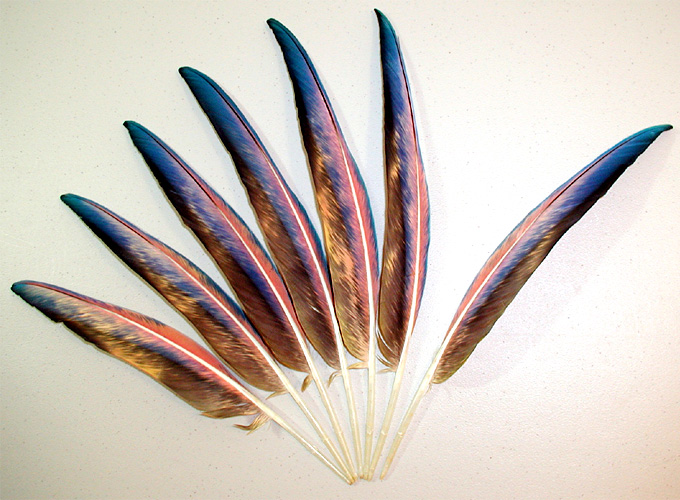Most people know that owls fly silently. The why of this is pretty simple: it makes them better hunters. Effortless, in fact. Their large eyes help them see in the dark. Their excellent hearing helps them pinpoint their prey. And their silent flight helps them swoop in undetected. They are amazing predators. But how do they do the stealth thing?
It all comes down to feathers. You know, those things birds are covered with.
These are macaw feathers, and fairly representative of the feathers of many birds:
 |
| Source |
Now, for comparison, an owl's flight feathers:
 |
| Source |
But there are a couple other things, more difficult to see here, that help owls fly silently. The first is the velcro-like structure of bird feathers. If you've ever handled a bird feather too much (or given it to a small child), they can look pretty tattered pretty quickly. What a lot of people don't know is that they can look pretty tattered on a bird, too-- the bird just preens them back into pristine condition. You can do this, too, the next time you handle a feather. Stroke the vanes of the feather gently with your fingers from the quill to the edges. It won't look as good as it does when the bird does it, but they've had tons of practice.
Anyway, this velcro effect will help by keeping the feathers together in one uniform piece so they break up the air as a whole instead of in tiny bits and pieces. But the real secret is in the leading edge of the feather.
Here's a close-up of a barn owl feather:
 |
| Source |
A-ha! Those little tiny ruffly bits at the top-- those are the secret!!! Right there!! You can see it!!
Okay, okay. I'm not crazy. Just excitable.
But, really-- that's the secret. Those tiny barbs act like baffles to break up the air flowing over each feather and the wing as a whole. Break up the air, and you can fly like a ninja. An air ninja.
Aw yeah.
No comments:
Post a Comment